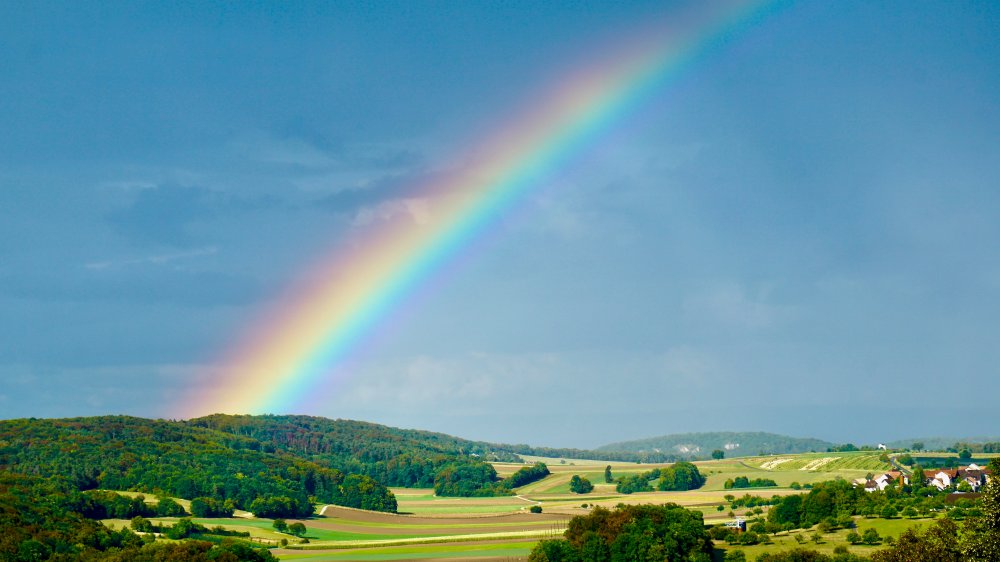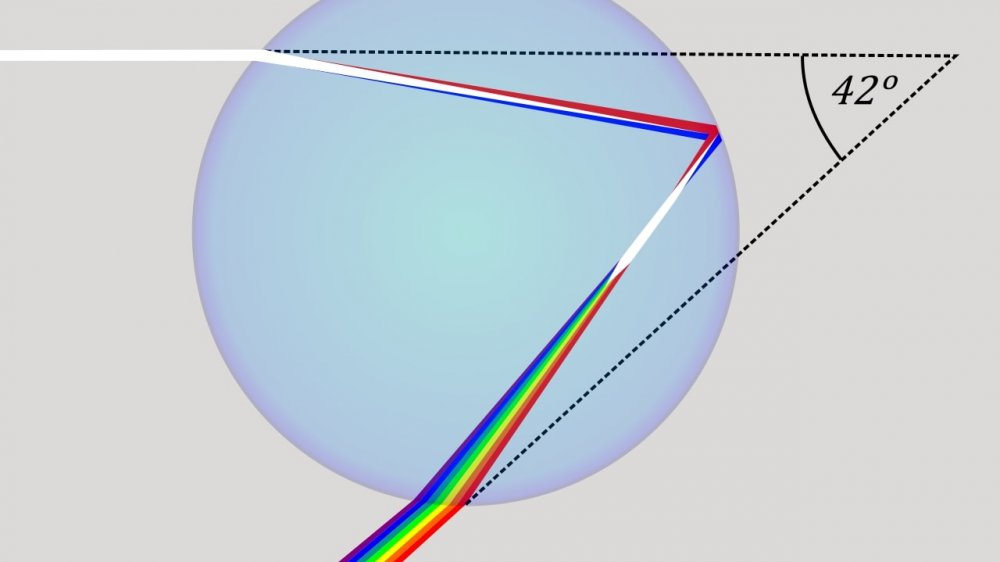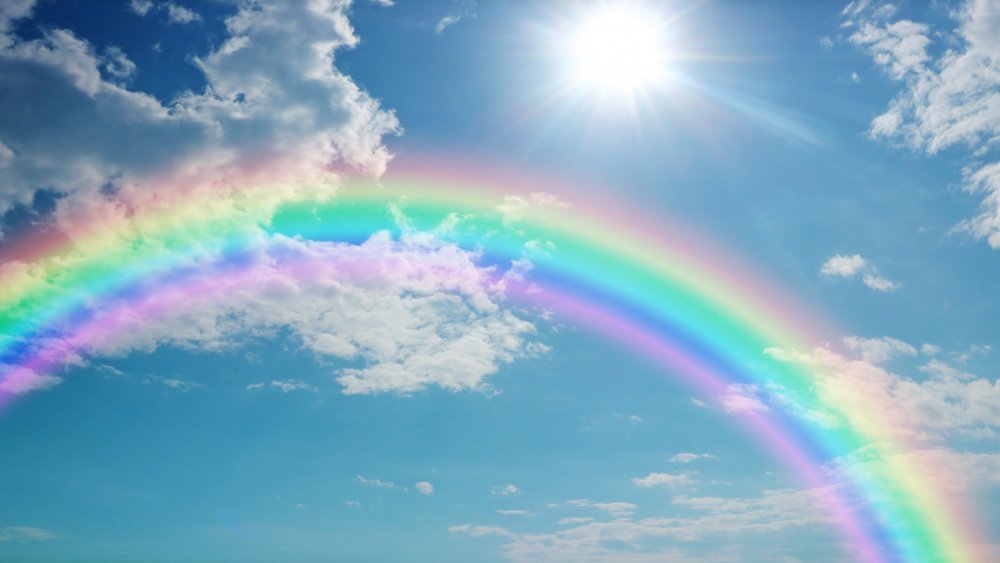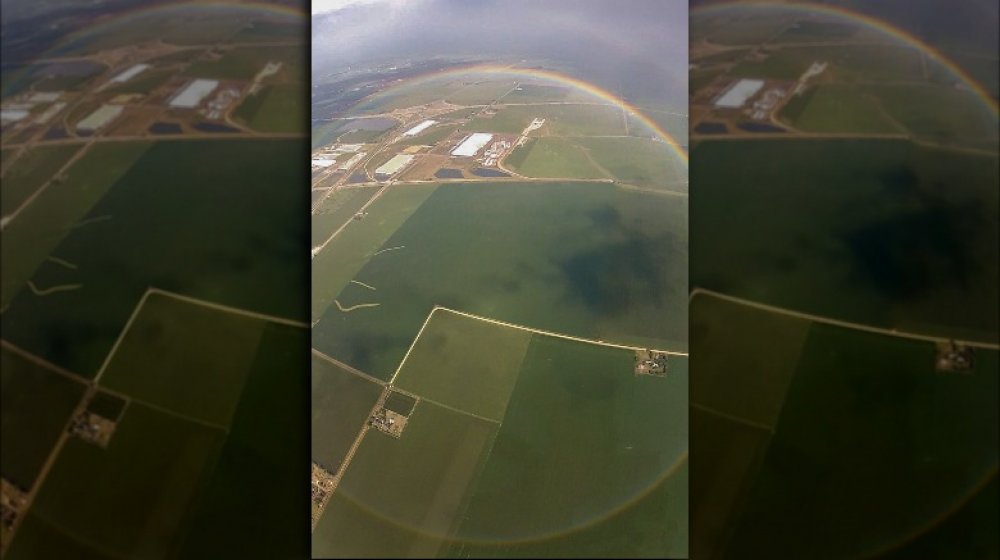Here's Why Rainbows Really Form
Rainbows have been magnificently symbolic throughout human history. In the Bible, the rainbow is a symbol of God's promise to Noah to never again flood the Earth. Since the 1970s, a rainbow flag has famously been used as a symbol of gay pride, reports CNN Style. (The city of Cusco, Peru, has a very similar flag, which confuses many tourists, says Salkantay Trekking.) And, in May of 2020, the world was distraught to hear that Paul Vasquez — famous for his "double rainbow" viral video — had passed away, per CNN.
Although they're relatively rare, almost everyone has seen a rainbow at one point or another. But few of us really understand why these beautiful arcs appear in the sky. Sure, it has something to do with sunlight and water droplets — but what, exactly?
To understand the rainbow, we'll have to go back to high school physics. Remember how electromagnetic waves exist on a spectrum? Many parts of this spectrum are completely invisible to humans. But sitting toward the middle of the spectrum is the visible light that humans can perceive, which ranges from red (with the longest wavelength) to violet (with the shortest wavelength), explains NASA.
Raindrops refract and reflect the sun's white light, breaking it into its colors
The sun emits all the colors of visible light at once. Our eyes perceive this combined light as white, says Stanford University, but it can still be separated into its constituent colors, which is exactly what happens when sunlight passes through raindrops. But sunlight doesn't take a straight path through a drop of water. According to Popular Science, before becoming a rainbow, sunlight actually gets refracted, reflected, and refracted again.
As Scientific American explains, refraction is what happens when light passes from one substance into another — like from air to water. Since light can travel faster in air than in water, its path actually gets bent — refracted — when it enters water. Furthermore, each wavelength of light gets bent differently, so red light will come out at a slightly different angle than purple light. This is how white light can become separated into its different colors.
Sunlight gets refracted as it passes from the air into a raindrop. Some of this refracted light is actually reflected when it hits the back of a raindrop, meaning it bounces off the back and then starts travelling towards the front of the drop once again. Once it reaches the front, the light gets refracted one more time as it passes from the water back into air. After this second refraction, the colors of light are now visibly distinct from one another.
But why a bow?
We've described the path that sunlight takes through an individual drop of water. But why do we see a big, arc-shaped "rainbow" in the sky when sunlight passes through many raindrops?
According to EarthSky, with numerous raindrops refracting and reflecting sunlight at once, only some of that light will be refracted at an angle that will hit your eyes. And, as the geometry would have it, the raindrops that are perfectly positioned to send light flying directly into your eyes occupy a bow-shaped portion of the sky. Each of these raindrops emits all the colors of visible light, but since that light has been refracted, every color is sent out from each raindrop at a different angle. Although the raindrops at the top of the bow are emitting every color of light, only the red light emerges at an angle that will actually hit your eyes. Likewise, you can only see the violet light that emerges from the raindrops at the bottom of the bow.
Rainbows are actually circular, and can be seen in duplicates
Fun fact: Rainbows are actually circular, not arch-shaped, per Science101. The main reason we only see an arch is because the ground gets in the way. If you get high enough, like on a mountain or in a plane, you can sometimes see the entire circle of a rainbow. Additionally, duplicate rainbows, like the iconic double rainbow, occur when sunlight is reflected multiple times within a raindrop, per ABC.
Rainbows can only appear under certain conditions. First, the sky has to be clear enough for the sun to shine through the rain, which is why you won't see a rainbow if the sky is still covered by storm clouds. Second, the sun has to be relatively low in the sky, and it has to be behind you (i.e. in the opposite direction from the rainbow itself).
Rainbows are pretty special, and we should feel special for living on a planet that has them. NASA reports a theory that the atmospheric conditions on Saturn's moon, Titan, might allow for rainbows on that celestial body, too. Anybody want to go for a sightseeing trip?



